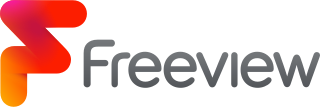
Freeview is the United Kingdom's sole digital terrestrial television platform. It is operated by Everyone TV and DTV Services Ltd, a joint venture between the BBC, ITV, Channel 4, Channel 5 and Sky. It was launched on 30 October 2002, taking over the licence from ITV Digital which collapsed that year. The service provides consumer access via an aerial to the seven DTT multiplexes covering the United Kingdom. As of July 2020, it has 85 TV channels, 26 digital radio channels, 10 HD channels, six text services, 11 streamed channels, and one interactive channel.
Television broadcasts in the United Kingdom began in 1932, however, regular broadcasts would only begin four years later. Television began as a public service which was free of advertising, which followed the first demonstration of a transmitted moving image in 1926. Currently, the United Kingdom has a collection of free-to-air, free-to-view and subscription services over a variety of distribution media, through which there are over 480 channels for consumers as well as on-demand content. There are six main channel owners who are responsible for most material viewed.

ITV1 is a British free-to-air public broadcast television channel owned and operated by the British media company ITV plc. It provides the Channel 3 public broadcast service across all of the United Kingdom except for the central and northern areas of Scotland where STV provides the service.
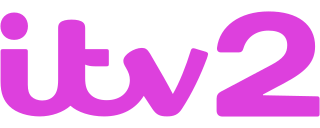
ITV2 is a British free-to-air television channel owned by ITV Digital Channels, a division of ITV plc. It was launched on 7 December 1998. For a number of years, it had the largest audience share after the five analogue terrestrial stations, a claim now held by its sister service ITV3 both of which are freely available to a majority of households.
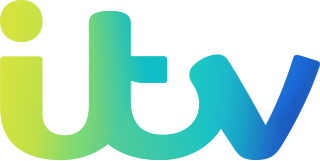
ITV plc is a British media company that holds 13 of the 15 regional television licences that make up the ITV network, the oldest and largest commercial terrestrial television network in the United Kingdom.
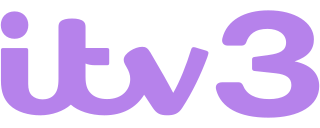
ITV3 is a British free-to-air television channel owned by ITV Digital Channels, a division of ITV plc. The channel was first launched on Monday 1 November 2004 at 9 pm, replacing Plus (Granada). ITV3 is the sixth-largest UK television channel by audience share and the largest after the five main terrestrial services, the position which was previously held by its sister station ITV2. The channel is known for repeats of ITV dramas, and including sequential reruns of Agatha Christie's Poirot, Classic Coronation Street, Classic Emmerdale, Heartbeat, Inspector Morse and A Touch of Frost, amongst others as well as formerly showing repeats of Kojak, Numb3rs, Columbo, Cagney & Lacey and The Bill.

ITV Digital Channels Limited is a wholly owned subsidiary of British broadcaster ITV plc. It manages all of the company's television channels with the exception of ITV1, which is part of the entire network.
Digital terrestrial television in the United Kingdom encompasses over 100 television, radio and interactive services broadcast via the United Kingdom's terrestrial television network and receivable with a standard television set. The majority of digital terrestrial television (DTT) services, including the five former analogue channels, are broadcast free-to-air, and a further selection of encrypted pay TV services are also available. Freeview is the only DTT service since Top Up TV closed in 2013.

ITV4 is a British free-to-air television channel which first aired on 1 November 2005. It is owned by ITV Digital Channels, a division of ITV plc, and is part of the ITV network.
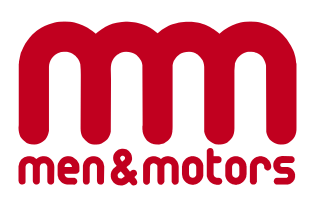
Men & Motors was a men's lifestyle television channel in the UK. It was the last remaining station operated by the former Granada Sky Broadcasting joint venture, set up by Granada Television and satellite broadcaster British Sky Broadcasting in 1996. Men & Motors closed on 1 April 2010.
Freesat is a British free-to-air satellite television service, first formed as a joint venture between the BBC and ITV plc and now owned by Everyone TV. The service was formed as a memorandum in 2007 and has been marketed since 6 May 2008. Freesat offers a satellite alternative to the Freeview service on digital terrestrial television, with a broadly similar selection of channels available without subscription for users purchasing a receiver.
Freesat from Sky (FsfS) was a British satellite television service from Sky UK. It offered over 240 free-to-air (FTA) channels in its EPG. This is a greater number than its competitors, Freesat, which has 200+, and Freeview, which has 70+. It also had up to six HD channels and used to have Sky Active interactive data service. Sky was not actively promoting the service and the service has quietly been discontinued for new customers as of 2021.

STV is a free-to-air public broadcast television channel owned and operated by the STV Group. It is made up of the Central Scotland and Northern Scotland ITV public broadcaster licences, formerly known as Scottish Television and Grampian Television respectively.
There are four major forms of digital television (DTV) broadcast in the United Kingdom: a direct-to-home satellite service from the Astra 28.2°E satellites provided by Sky UK, a cable television service provided by Virgin Media ; a free-to-air satellite service called Freesat; and a free-to-air digital terrestrial service called Freeview. In addition, an IPTV system known as BT TV is provided by BT. Individual access methods vary throughout the country. 77% of the United Kingdom has access to HDTV via terrestrial digital television. Satellite is the only source of HDTV broadcast available for the remaining 23%.
High-definition television in the United Kingdom is available via cable, IPTV, satellite and terrestrial television. The first high-definition broadcasts began in late 2005 and since then the number of channels available to view has grown to a maximum of 87 that can be viewed on pay-TV service, Sky.
Freeview is the name for the collection of free-to-air services on the digital terrestrial television platform in the United Kingdom. The service was launched at 5 am on 30 October 2002 and is jointly operated by its five equal shareholders – BBC, ITV, Channel 4, BSkyB and transmitter operator Arqiva. This article documents the history of the Freeview service, from its inception up to the present.
This is a timeline of the history of the British television network ITV.
This is a timeline of the British company ITV Digital Channels and its predecessors Granada Sky Broadcasting and Carlton Communications, and digital channels of other ITV-related companies. The timeline does not include events related to ITV network's flagship channel.












